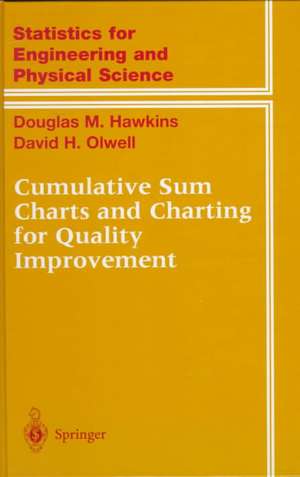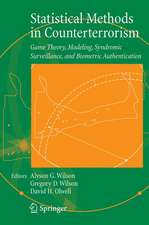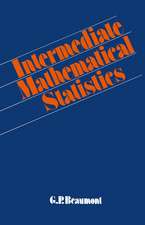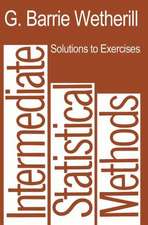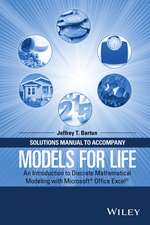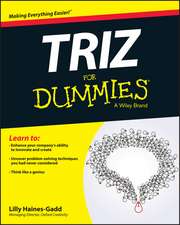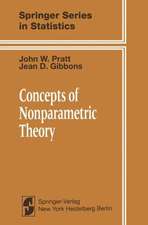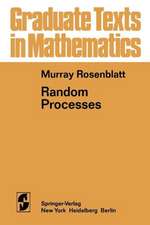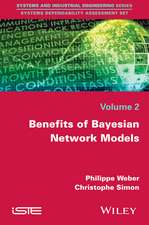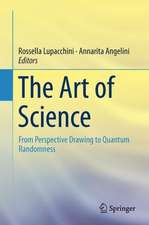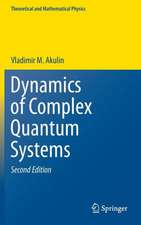Cumulative Sum Charts and Charting for Quality Improvement: Information Science and Statistics
Autor Douglas M. Hawkins, David H. Olwellen Limba Engleză Hardback – 23 ian 1998
| Toate formatele și edițiile | Preț | Express |
|---|---|---|
| Paperback (1) | 1106.63 lei 6-8 săpt. | |
| Springer – 6 oct 2012 | 1106.63 lei 6-8 săpt. | |
| Hardback (1) | 1384.56 lei 6-8 săpt. | |
| Springer – 23 ian 1998 | 1384.56 lei 6-8 săpt. |
Din seria Information Science and Statistics
- 24%
 Preț: 1151.34 lei
Preț: 1151.34 lei - 24%
 Preț: 1327.63 lei
Preț: 1327.63 lei - 20%
 Preț: 415.71 lei
Preț: 415.71 lei - 18%
 Preț: 1114.83 lei
Preț: 1114.83 lei - 18%
 Preț: 1125.09 lei
Preț: 1125.09 lei - 15%
 Preț: 647.73 lei
Preț: 647.73 lei - 20%
 Preț: 1059.92 lei
Preț: 1059.92 lei - 20%
 Preț: 1050.02 lei
Preț: 1050.02 lei - 18%
 Preț: 956.03 lei
Preț: 956.03 lei - 20%
 Preț: 650.27 lei
Preț: 650.27 lei - 18%
 Preț: 897.65 lei
Preț: 897.65 lei - 15%
 Preț: 583.56 lei
Preț: 583.56 lei - 15%
 Preț: 591.79 lei
Preț: 591.79 lei -
 Preț: 386.61 lei
Preț: 386.61 lei - 20%
 Preț: 1284.14 lei
Preț: 1284.14 lei -
 Preț: 394.51 lei
Preț: 394.51 lei - 20%
 Preț: 989.31 lei
Preț: 989.31 lei - 18%
 Preț: 953.03 lei
Preț: 953.03 lei - 20%
 Preț: 335.52 lei
Preț: 335.52 lei - 18%
 Preț: 891.02 lei
Preț: 891.02 lei
Preț: 1384.56 lei
Preț vechi: 1688.49 lei
-18% Nou
Puncte Express: 2077
Preț estimativ în valută:
265.02€ • 287.97$ • 222.76£
265.02€ • 287.97$ • 222.76£
Carte tipărită la comandă
Livrare economică 21 aprilie-05 mai
Preluare comenzi: 021 569.72.76
Specificații
ISBN-13: 9780387983653
ISBN-10: 0387983651
Pagini: 247
Ilustrații: XVI, 247 p.
Dimensiuni: 155 x 235 x 22 mm
Greutate: 0.54 kg
Ediția:1998
Editura: Springer
Colecția Springer
Seria Information Science and Statistics
Locul publicării:New York, NY, United States
ISBN-10: 0387983651
Pagini: 247
Ilustrații: XVI, 247 p.
Dimensiuni: 155 x 235 x 22 mm
Greutate: 0.54 kg
Ediția:1998
Editura: Springer
Colecția Springer
Seria Information Science and Statistics
Locul publicării:New York, NY, United States
Public țintă
Professional/practitionerCuprins
1 Introduction.- 1.1 Common-cause and special-cause variability.- 1.2 Transient and persistent special causes.- 1.3 The Shewhart and CUSUM charts.- 1.4 Basis for the CUSUM chart for a normal mean.- 1.5 Out-of-control distribution of the CUSUM.- 1.6 Testing for a shift —the V mask.- 1.7 Estimation following a signal.- 1.8 Using individual readings or rational groups.- 1.9 The decision interval form of the CUSUM.- 1.10 Summary.- 1.11 Further reading.- 2 CUSUM design.- 2.1 The choice of k and h.- 2.2 Runs, run length, and average run length.- 2.3 The Shewhart Xbar chart as CUSUM.- 2.4 Summary.- 2.5 Further reading.- 3 More about normal data.- 3.1 In-control ARLs.- 3.2 Out-of-control ARLs.- 3.3 FIR CUSUMs: zero start and steady state start.- 3.4 Controlling for the mean within a range.- 3.5 The impact of variance shifts.- 3.6 Combined Shewhart and CUSUM charts.- 3.7 Effect of model departures.- 3.8 Weighted CUSUMs.- 3.9 Summary.- 3.10 Further reading.- 4 Other continuous distributions.- 4.1 The gamma family and normal variances.- 4.2 The inverse Gaussian family.- 4.3 Example from General Motors.- 4.4 Comments.- 4.5 Further reading.- 5 Discrete data.- 5.1 Types of discrete data.- 5.2 The graininess of the ARL function.- 5.3 The Poisson distribution and count data.- 5.4 The Poisson and CUSUMs.- 5.5 Weighted Poisson CUSUMs.- 5.6 The binomial distribution.- 5.7 Weighted binomial CUSUMs.- 5.8 Other discrete distributions.- 5.9 Summary.- 5.10 Further reading.- 6 Theoretical foundations of the CUSUM.- 6.1 General theory.- 6.2 The general exponential family.- 6.3 The Markov property of CUSUMs.- 6.4 Getting the ARL.- 6.5 Summary.- 6.6 Further reading.- 7 Calibration and short runs.- 7.1 The self-starting approach.- 7.2 The self-starting CUSUM for a normal mean.- 7.3 Self-startingCUSUMs for gamma data.- 7.4 Discrete data.- 7.5 Summary.- 7.6 Further reading.- 8 Multivariate data.- 8.1 Outline of the multivariate normal.- 8.2 Shewhart charting—Hotelling’s T2.- 8.3 CUSUM charting — various approaches.- 8.4 Regression adjustment.- 8.5 Choice of regression adjustment.- 8.6 The use of several regression-adjusted variables.- 8.7 The multivariate exponentially weighted moving average.- 8.8 Summary.- 8.9 Further reading.- 9 Special topics.- 9.1 Robust CUSUMs.- 9.2 Recursive residuals in regression.- 9.3 Autocorrelated data.- 9.4 Summary.- 9.5 Further reading.- 10 Software.- 10.1 Programs and templates.- 10.2 Data files.- References.
Caracteristici
Award winning authors: - Hawkins' work on CUSUMs won him the Ellis R. Ott Award for best paper - Olwell's work on applications of CUSUMs to managing sexual harassment has been nominated for the 1998 Barchi Prize Applications-oriented viewpoint presented with only the essential theoretical underpinnings Accessible presentation requires only basic statistical training Supplementary material available on the web, including CUSUM software and data sets First publication in the new series Statistics for Engineering and Physical Sciences
